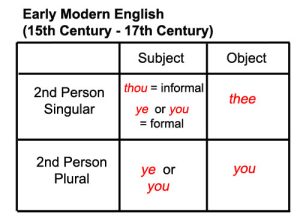Showing the Plurals

Abstract
This article examines the challenge of distinguishing between singular and plural forms of second-person pronouns in modern English translations of biblical texts. Unlike earlier English versions such as the King James Version, which used distinct forms (ye, thee, thou, you), modern English lacks this clarity. The UPDV Bible addresses this issue by implementing a system of superscript plus signs (+) to mark plural forms of "you" and "your," enhancing translation accuracy and preserving important contextual distinctions present in the original languages.
The Challenge of Singular and Plural "You" in Modern English
Have you ever wondered if the word "you" or "your" referred to more than just one person in the Bible? In earlier forms of English, Bibles such as the King James Version used words other than just "you". Words such as ye, thee, thou, and you were different and could indicate singular or plural. In modern English there is not an easy way to say this except for something like "you all".
The UPDV Bible's Solution
In the UPDV Bible, plus signs (+) are used in superscripts next to words such as "you" and "your" when they refer to a group of two or more. This is done to improve accuracy.
Implementation in Command Sentences
In some cases, the word 'you' or 'your' is not present in some verses for smoother English style. This was mostly done in imperative (command) sentences. If the word 'you' was plural and the context is not clear, the plus sign will move to the verb. For example, a command such as, "Do you+ not seek these things" becomes "Do+ not seek these things." In such cases, other plural verbs in the same verse may be marked plural as needed to avoid ambiguity. In situations other than these, verbs are not generally marked as to whether they refer to a singular or plural subject.